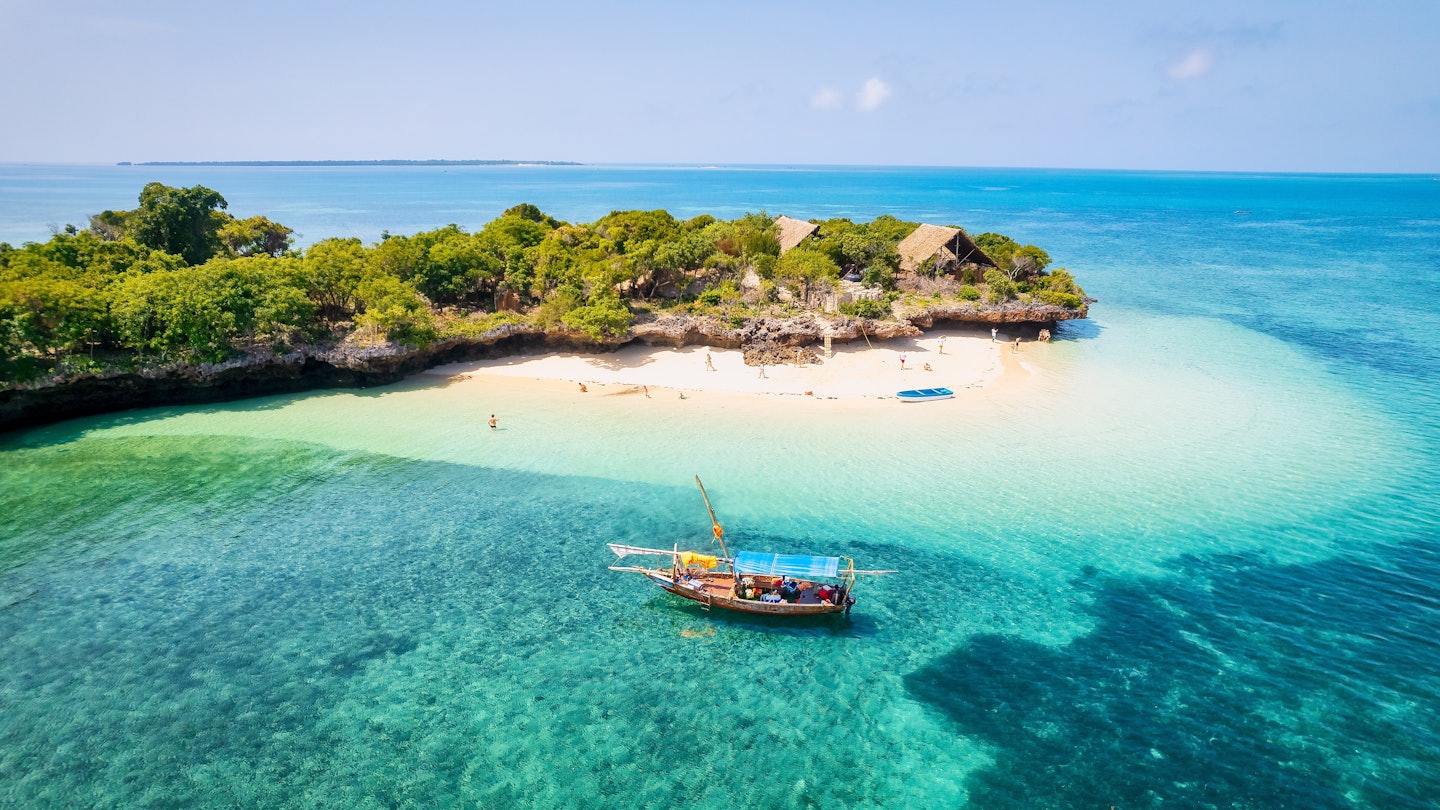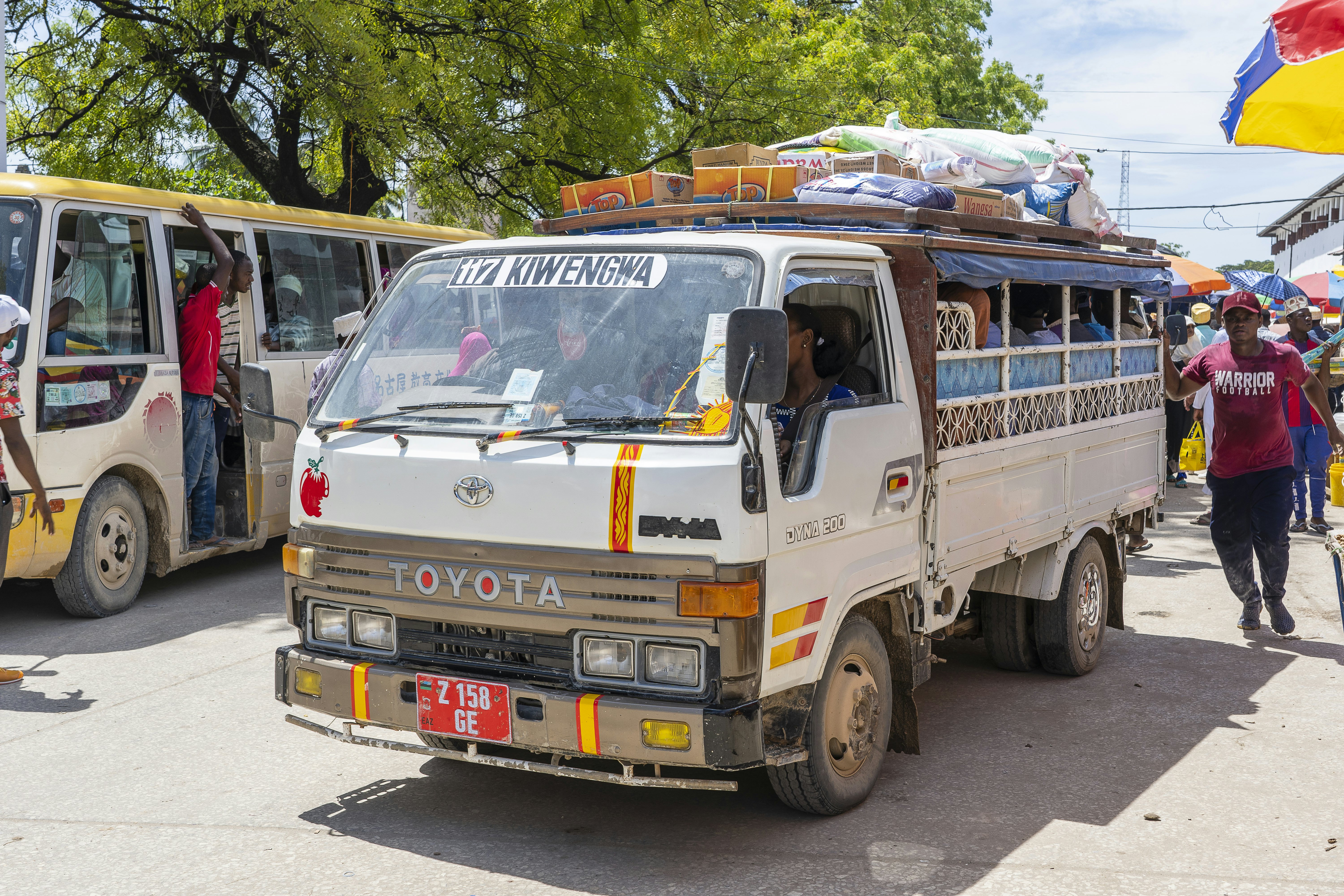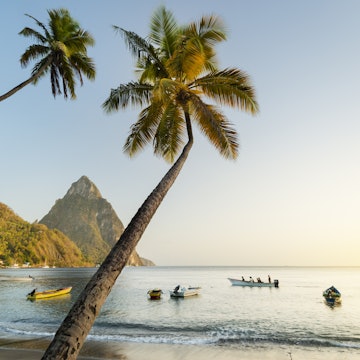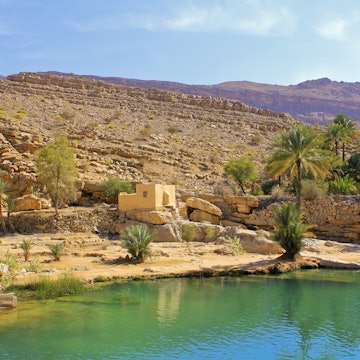
How to explore the beaches and islands of Tanzania’s Swahili Coast

Sep 19, 2023 • 5 min read

Exploring the beaches and islands on Tanzania’s coast offers a fascinating taste of the Swahili world © Shutterstock
In Lonely Plan-It, we take you step by step through how we planned some of the most complicated travel adventures. Below, Mary Fitzpatrick shares tips on how to explore Tanzania’s Swahili coast.
Tanzania’s Swahili Coast is timeless, with daily life shaped by the rhythms of the sea and the winds of the monsoon.
Dhows slip silently past dense stands of mangroves, their white sails billowing in the breeze. The lanterns of small wooden fishing boats twinkle on the night horizon. Coastal ports buzz with activity, as buckets of fish are carried to shore for auction. Palms wave in the breeze, baobabs stand sentinel over ancient ruins and the scents of jasmine and ylang-ylang waft through the air.
Apart from Zanzibar Island, this coast seldom features on standard travel itineraries. Yet a few weeks (or longer!) spent beach- and island-hopping here is a magical experience, and a fascinating step into the Swahili world.
While it’s easy enough to reach Zanzibar and Dar es Salaam – the main hubs – much of the rest of the region is off the grid. Yet with a bit of planning and an adventurous spirit, the area is straightforward to explore. Here are a few tips to help you get ready for what is likely to be one of your most memorable journeys in East Africa – or anywhere.

Step 1: Align on your starting point, and how you want to get around
Explore broadly, or in depth? And by plane, bus and/or ferry?
The Swahili Coast is the ultimate slow-travel destination, with a functional network of local buses and ferries to help you make your way around. Daily flights on small planes are also available. It’s helpful to decide at the outset whether you’d prefer traveling the coast’s full length, or instead pick one or two locations as bases to discover more in depth.
A good starting point for either plan is Zanzibar Town, with regional and international flight connections, a wide range of accommodation and facilities and plenty to do around the old Stone Town and nearby beaches. To continue your travels, ferries and small planes link Zanzibar with Pemba Island, the Mafia Archipelago and the mainland coast.
Useful connections include daily Azam Marine ferries between Zanzibar and Dar es Salaam, and flights on Coastal Aviation and Auric Air that link Zanzibar with various mainland destinations and with Mafia Island (generally via Dar es Salaam). Once on the mainland, buses run up and down the coast, north to Pangani, Tanga and the Kenyan border, and south to Mikindani and Mtwara via Lindi and Nangurukuru junction (for Kilwa Masoko). Dar es Salaam’s Magufuli Bus Terminal is the main departure and arrival point, although a number of southbound buses leave from the city’s Temeke and Mbagala stations. Daily bus and flight connections also link the coast (Tanga/Pangani, Dar es Salaam and Zanzibar) with Arusha – handy if you want to combine your beach- and island-hopping with a northern circuit safari.
When planning your stops, don’t miss the Mafia Archipelago, with its sandy lanes, stands of coconut palms and resilient traditional way of life. With fine stretches of beach running north and south, the tiny Swahili outpost of Pangani is also a wonderful stop, as are the Unesco World Heritage Site on Kilwa Kisiwani, the lively coastal town of Lindi and the beaches around Mikindani and Mtwara in Tanzania’s far south.

Step 2: Time your travel just right
Consider the season you prefer at this year-round destination.
The coast and islands can be visited at any time of year. The cooler, drier season from late June to September is fine for exploring, with clear skies and easy access to almost everywhere – though do keep in mind that it’s busier in high season, with choppy seas thanks to the southeastern kusi monsoon winds. March to May is the main rainy season: while you’ll have places to yourself, it’s harder to get around away from main paved routes, and a number of coastal and island lodges close. October is generally an ideal month all along the coast.
Whenever you travel, it’s best to arrange your Tanzania visa in advance online; allow at least two weeks for processing. Visas are also available on arrival at major ports of entry for many nationalities.
Step 3: Lean in to being flexible
Don’t lock yourself in.
Except for the high season on Zanzibar and on the Mafia Archipelago, there’s no need to book accommodation or transport in advance. Much of the charm of travel along the Swahili Coast lies in remaining flexible. Anticipate lingering longer than originally planned, or perhaps exploring a new destination that you’ll have only just learned about.

If I could do it all again…
Every time I’ve traveled along Tanzania’s Swahili Coast, I’ve always wished that I had longer to enjoy the region, and to delve even more into each stop along the way. If you have time, I’d recommend allowing at least three to four weeks for exploring the mainland coast and the islands.
Another tip: travel along the coast can be a bit rustic at times, especially if you’re using local transport and staying in budget-friendly guesthouses. To break things up, program a night (or a few) at one of the region’s many wonderful upmarket lodges.

With its languid pace and reserved but welcoming vibe, the Swahili Coast is ideal for immersing yourself in local life, whatever your budget. Take time to browse in village markets for the region’s abundant pineapples, mangoes, papaya and other fruits. Arrange a freshly grilled fish dinner under the stars with a local fisherman. And be sure to seek out opportunities for cultural tourism: Jambiani (on Zanzibar Island), Kilwa Masoko and Dar es Salaam are particularly good spots for this.
Finally, if local bus travel isn’t your thing, hiring a car and driver can be readily arranged. Helpful contacts include: Jumanne Mastoka (+255 765 007 002; mjumanne@yahoo.com), who offers reliable transfers and tours based out of Dar es Salaam; Eco2Diving.com, offering a lodge, dive center and range of activities in Mikindani and the far south; Chole Mjini and Butiama Mafia Island for the Mafia Archipelago; Fish Eagle Point and Peponi Resort in the Tanga-Pangani area; Kilwa Beach Lodge near Kilwa Masoko; and Tembo House Hotel in Zanzibar’s Stone Town.















